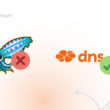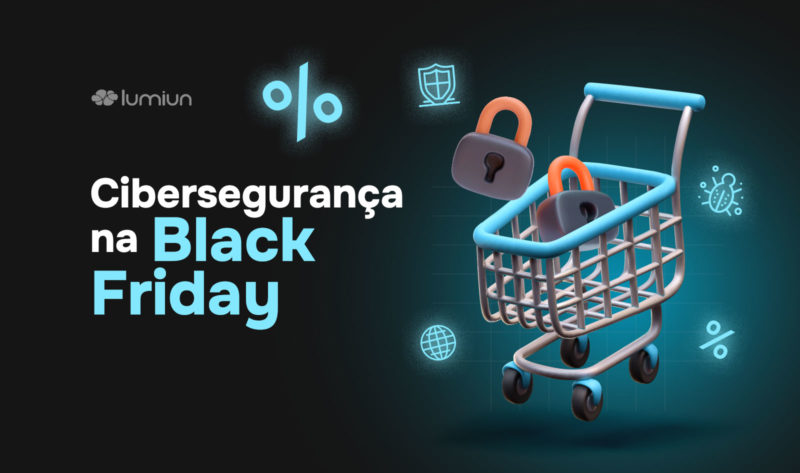Black Friday is one of the most awaited dates by traders, marked by attractive discounts and an exponential increase in purchasing volume. However, as consumers seek to take advantage of the best offers available, cybercriminals see on this date a valuable opportunity to explore vulnerabilities and perform digital attacks .
For this reason, it is essential that companies establish protocols and security measures to protect themselves from these actions during this period. customer experience and ensure that no problem occurs due to lack of cyber security .
Why is Black Friday a target for cybercriminals?
During Black Friday, traffic on e-commerce sites grows significantly, emerging with it vulnerabilities that can be explored. This large concentration of digital activities attracts cybercriminals , who are interested in interrupting services , stealing sensitive data or applying blows.
Consumer behavior plays a key role in risks growth. Thus, the search for unmissable offers leads people to neglect online safety , clicking suspicious links or accessing websites without checking their truth.
In addition, during Black Friday, the use of mobile devices to make purchases grows, expanding the attack surface. A report made by Appreach revealed that 72% of all sales traffic in the country is made through smartphones during this period. However, although tablets and smartphones are quite convenient, they often do not have the necessary protections, becoming attractive targets for malware and other types of threats.
Exponential growth in online transactions
As we said earlier, retail sales increase significantly during Black Friday. According to a survey by Opinion Box , 55% of consumers already plan to acquire some good on the date of Black Friday, as well as 35% of undecided consumers . In addition, the survey revealed that there is a 10% forecast of an increase in online sales during this period.
It is important to remember that Black Friday concentrates a massive amount of confidential data such as payment information, personal data and purchase preferences. Cybercriminals use this information to perform targeted attacks such as identity theft and financial fraud , which can cause immense losses to consumers and businesses .
Among the most explored vulnerabilities during this period are outdated systems and insecure connections . Cybercriminals can intercept transactions on public Wi-Fi networks , capturing sensitive data provided by consumers.
To avoid this problem, companies need to implement end -to -to -end encryption in systems and educate their consumers about the risks involved in online purchases. information protection is important to maintain consumer confidence and brand integrity .
Sales data and digital vulnerabilities
During Black Friday, the huge number of transactions creates a rich cybercriminous environment that seek to explore vulnerabilities in data and systems . According to data pointed out by Clearsale, the losses with Black Friday fraud exceeded $ 10 million by 2023 . credit card numbers , purchase preferences and personal addresses become valuable targets and can be used for financial fraud or resold in the Dark Web .
In addition, transactions performed through the Pix have also grown. A survey conducted by Fiserv revealed that in 2023 there was a 131% increase compared to the 2022 Black Friday edition, a number that could be even higher by 2024.
Cybercriminals use advanced strategies to intercept and manipulate this data. Among the most common methods are the Man-in-the-Middle attacks , where information is captured during transmission, and the exploration of unprotected servers . Sites that do not have SSL certificates are especially vulnerable and can expose consumers to significant risks.
Investment in robust protection technologies such as end -to -end encryption minimizes vulnerabilities. Thus, consumer awareness is essential, being recommended to avoid purchasing on sites without proven safety and the maintenance of updated devices to reduce risks.
The rush and the impact on safety
Hurry at transactions and taking advantage of Black Friday's offers is one of the factors that most compromise the digital security of consumers. Fear of losing limited promotions causes users to act impulsively by clicking links without checking their authenticity . This haste is exactly what cybercriminals need to apply their blows.
For this reason, cybercriminals create false pages , misleading ads, and fraudulent means that simulate large brands or legitimate offers. According to the study by Redbelt Security, more than 100 false pages are created daily by cybercriminals to deceive consumers during purchases.
A recent survey by the datasmed institute showed that digital blows hit 24% of Brazilians over 16 in the last year. This means that more than 40.85 million people have suffered financial losses due to cyber crimes such as internet fraud , account invasion or card cloning.
In addition, it is important that both companies and consumers stay attentive. Organizations can invest in awareness campaigns to warn of the dangers of fake websites and suspicious links. In turn, consumers can protect themselves by adopting simple practices, such as avoiding clicking on unknown links and checking the URL .
Black Friday's main threats
Black Friday is one of the busiest periods of trade, both physical and digital, but it is also a fertile field for cybercriminals . During this event, they take advantage of the increase in volume of transactions and the lowest surveillance to launch attacks on a large scale and more sophisticated.
Among the most common threats is phishing , an attack in which false means or messages are distributed by simulating promotions in reliable stores. Thus, in order to cause temporary unavailability and operational damage, cybercriminals often perform DDOS attacks, purposely overloading sites, especially in high demand periods, such as Black Friday, where users are more prone to hasty actions.
Malware disguised as purchasing applications or software updates are another potential threat, considering that they can steal users' personal and financial information. Moreover, as mentioned earlier, the creation of fake websites that mimic pages of legitimate companies is also very dangerous. These sites deceive more inattentive consumers and capture financial and personal data.
-
Phishing and fraudulent emails
Phishing , exploring consumer's lack of attention and haste for promotions. The research Thales Global Data Threat Report (DTR) 2024 has shown that cybership continues to grow exponentially, and phishing accounts for 32% of criminal actions.
In this type of attack, cybercriminals send emails or fake messages that simulate reliable stores and promise unmissable offers, making consumers provide valuable data.
These emails often create a sense of urgency, inducing the consumer to act without verifying authenticity. For this reason, many phishing emails can come with phrases such as “ last chance ” or “ promotion valid for a few hours ”.
To protect yourself, you need to carefully check the sender's address and avoid accessing links or downloading messages that have not been requested . Thus, companies can reduce their customers' exposure to these attacks through educational campaigns and technologies such as anti-phishing filters .
How to identify suspicious messages?
Phishing emails , although sophisticated, still have common characteristics that help in their identification. Frequent grammatical or spelling errors can be indicative, as many of these messages are translated automatically or created without proper attention to detail. The links contained in these fake emails are suspected using URLs that mimic legitimate sites, but with minor changes, such as different domains or characters exchange .
The request for personal information is another recurring feature, as the urgent messages, as we mentioned earlier, cause psychological pressure to lead the recipient to act quickly without checking the authenticity of the content.
To avoid damage, consumers should avoid clicking suspicious links , passing the cursor over the address to check if it is a real link, or access the store website directly by the browser.
-
DDOS attacks and service interruptions
During Black Friday, distributed denial attacks (DDOS) represent a recurring and particularly destructive threat. Nescout Systems published the DDOS 2024.1 Threat Intelligence Report , with data from the first half of 2024. According to the document, there was a significant increase of 43% in application level attacks and 30% in volumetric attacks, especially Europe and the Middle East as the most affected regions.
To perform these attacks, criminals use networks of committed devices, known as botnets, which consist of malware infected and remotely controlled machines. Hackers explore personal computers, servers and internet devices (IoT), such as safety cameras, smart routers and appliances, generate attack traffic.
The operation of a DDOS attack begins with the creation of a Botnet, where the invader controls a large number of bots (infected) and then sends instructions to these devices to send simultaneous requests to the server or victim network. The goal is to flood the system with excessive traffic , which can result in failures, making the site or service inaccessible. The fact that each bot is a legitimate device makes the identification and mitigation of the attack more complex, as malicious traffic mixes with legitimate traffic, making it difficult to distinguish between the two.
The impact of a DDOS attack during Black Friday is particularly severe, as this online purchasing period already generates an exponential increase in consumer traffic. The servers, already overloaded due to the volume of access and transactions , become even more vulnerable to these attacks , resulting in system drops, transaction interruptions and loss of access to websites. For companies, damage is not limited to loss of revenue while stopping operations.
Consumer confidence directly impacts the company's image. Consumers who face difficulties in accessing websites miss the opportunity to make purchases, which can lead to frustration and even distrust about the company's ability to ensure safe and efficient service.
In addition to direct financial loss, companies also face challenges in recovering their image in the market. The perception of inefficiency or lack of safety may have a lasting impact on customer loyalty and brand reputation. Typical signs of a DDOS attack, such as an inexplicable increase in traffic at unusual times or a sudden peak of requests to the same page, require detailed investigation and the use of data analysis tools to distinguish between an attack and a legitimate traffic peak. This complexity makes the defense against DDOS attacks a constant challenge for companies, which need to be prepared to quickly identify and mitigate these threats during high demand periods, such as Black Friday.
Impact on online purchases and commercial operations
The unavailability of the site during Black Friday can have a significant financial impact for organizations. During this period, many stores generate much of the annual revenue, and when the site is down, sales opportunities are lost . In addition, there may also be additional costs such as system repair and attack mitigation, as well as compensation for affected customers .
Interruption of services may impair consumers' loyalty . The frustration of many clinates for not being able to access the offers disclosed can make them abandon the company and seek competitors. This, besides decreasing sales, also affects the brand image in the long run. Customer confidence is a valuable asset for companies, and can be severely impact because of such an attack.
-
Malware and False Pages
Although it is a recurring problem throughout the year, malware and false pages can increase significantly during Black Friday. The likelihood of consumers facing this type of scam increases considerably, as cybercriminals take advantage of increased traffic and the search for discounts to spread their strategies.
By clicking fake links or visiting fraudulent sites , consumers can download malicious software on their devices. These malware can be used for information theft and even to control the victim's device, favoring the application of other blows.
It is important to remember that these false pages are created by cybercriminals identically to the original, but in order to collect confidential information. These pages are often distributed through phishing emails , social networking ads or direct consumer messages.
Against this kind of threat, it is essential to be aware of some signs. Make sure the site is safe and avoid accessing suspicious links received by email or social networks. Always buy on reliable and known websites using safety solutions to reduce the risk of infection.
In addition to checking if the site address starts with “https” and if a lock next to the URL appears, also evaluate the look of the site: spelling errors, a strange layout, or poorly organized pages can be signs of fraud.
Another tip is to check if the site offers basic information such as CNPJ , physical address and light contact means such as a functional SAC. Prefer to enter the site address directly on the browser, avoid clicking on emails sent by email or social networks, which can lead to fake pages.
-
Fraud with credit card data
As we mentioned, many cyber attacks are focused on obtaining personal consumer data , and this information can be used by criminals at other frauds, such as credit card data fraud . Cybercriminals use various tactics to capture this financial information, taking advantage of the hurry and enthusiasm to take advantage of the offers . With this data in hand, criminals are able to make fraudulent purchases , perform bank transfers or even sell the information in clandestine markets .
This data can be obtained in different ways, such as malware , phishing emails , fake pages and even keyloggers , which are installed on computers or devices to record the typed keys. The Man in the Middle attack can also be used, where cybercriminals intercepted communication between the consumer and the store's website to steal the transmitted information.
To protect your financial data during Black Friday , consumers must adopt some security precautions. First, always check if the site where you are making the purchase is legitimate and if it uses a safe connection . Use digital wallets or virtual cards that generate credit card temporary numbers for this type of transaction, reducing the risk of exposure of the actual data .
The future of Black Friday and cybersecurity
As we can see throughout this article, Black Friday is an unmissable opportunity for consumers and also for cybercriminals who want to explore vulnerabilities. As technology advances and forms of online transaction become more sophisticated, new challenges for digital security arise. Protect information , ensuring the integrity of e-commerce platforms and consumer safety are issues that have become even more critical, and it is essential to establish a constant adaptation from both companies and consumers.
AI -based attacks and sophisticated malware
As security systems become more robust, they also evolve the techniques of cybercriminals . With the advancement of technology, new attack strategies are being developed, such as deepfakes and artificial intelligence -based attacks . These measures can simulate legitimate actions, deceive consumers and the protection system, requiring constant work to adapt and improve.
Automation of cyber attacks , in turn, can allow criminals to make frauds on a large scale faster and more effective, challenging companies' defenses and creating a more dangerous environment for e -commerce .
The sophistication of malware also has a great challenge. Cybercriminals have already developed intelligent strategies and more sophisticated malware that can be even more dangerous for users and harder to detect .
In order to spy, sabotage or extort, hackers use advanced techniques to design sophisticated malware that avoids detection and causing large -scale damage. Examples include Stuxnet , which sabotaged nuclear centrifuges in Iran, and Wannacry , which spread globally using eternalblue vulnerability to encrypt data and demand ransom. Notpetya Wannacry , aimed to destroy systems, affecting companies worldwide.
For this reason, the development of safety strategies is tireless and intense work, seeking new ways to protect users against this type of action.
IoT devices and vulnerabilities in the supply chain
The growing adoption of IoT devices (Internet of Things) in corporate environments, especially during large volume events like Black Friday , creates new opportunities for cybercriminals . These devices, such as intelligent thermostats and even monitoring devices, connect to the network, becoming potential access points for attacks. Often, these devices do not have good security resources, becoming vulnerable access points . The lack of security protocols in these devices makes it easier for cybercriminals to exploit this breach to access sensitive systems and confidential data.
In addition, the supply chain has become an increasingly targeted target, as many companies depend on suppliers for the delivery of products and services. When this network is compromised, attackers can access confidential information such as customer data and internal processes , directing attacks on products and services .
An example of this was the attack on SolarWinds , which demonstrated a vulnerability in a single supplier that compromised the safety of an entire corporate network. During high -traffic events such as Black Friday , companies should ensure that their suppliers implement robust digital safety measures .
How can your business protect yourself during Black Friday?
We know that Black Friday is one of the most anticipated dates of commerce, but also one of the riskiest for digital security . Increasing online transactions and pressure to offer unmissable discounts make companies easy targets for cybercriminals . For this reason, the company needs to adopt measures to protect itself and avoid damage caused by these attacks.
These measures should be implemented to ensure that operations remain safe and continuous , as well as avoid financial losses and reputation damage. Here are some of the best practices that companies can follow to protect themselves during this period of high demand.
Investment in Infrastructure and Security
One of the best ways to protect the company from cyber attacks during Black Friday is through more robust security infrastructure investments This involves not only the implementation of firewalls , DNS filter intrusive detection systems , but the strengthening of the corporate network to deal with increased traffic.
During the Black Friday , several sites experience great overload, which can make systems vulnerable. In this sense, it is the company's responsibility to prepare and strengthen the infrastructure of servers and networks to support large volume of simultaneous access.
Firewall solutions and constant monitoring
Robust firewalls are essential to creating a defense barrier against external attacks. At Black Friday , there is a more intense threat of cyber attacks, it is necessary for companies to implement constant network monitoring to ensure protection.
Advanced safety tools can be used to identify suspicious behaviors and possible real -time vulnerabilities , allowing security teams to quickly act to block these actions. Combining firewalls , next generation of intrusions and real -time monitoring is an effective strategy for detecting and preventing unauthorized access attempts and other threats.
Consumer education
Although the internal security is indispensable, it is also necessary to invest in consumer education to prevent fraud and attacks of various types. During Black Friday , consumers are more likely to fall into blows, such as fake sites and fraudulent emails, because of their hurry and urge to find unmissable offers. Offering clear guidelines for recognizing safe websites and verifying authentic URLs is critical, as well as guidance to avoid clicking suspicious links .
Companies need to inform their customers about best security practices, such as using strong passwords and making purchases only on safe websites (https) . Allied to this, authentication of two factors (2FA) is essential, contributing to a safer digital environment and increases the protection of personal information.
Another key tip is to avoid using public wi-fi networks to improve transactions safety. Many of these networks do not have the necessary safety features, favoring information exposure and increasing the attack surface.
Implementation of authentication in two steps (2FA)
Two -step authentication is an essential measure to protect accounts from unauthorized access . It requires the user to provide at least two different forms of identification to significantly hinder the work of cybercriminals .
This process works as follows:
- First layer: The first layer of multifactorial security is the password , common in most platforms. However, these passwords can be vulnerable to brute strength attacks . For this reason, the password itself is not enough to ensure safety, especially in times of high traffic.
- Second layer: An additional code acts as a second layer of security, requiring the user to provide code to confirm their identity. This code can be sent by SMS , email or generated by an authentication application . With limited validity, it makes it much more difficult for cybercriminals to use stolen information.
Avoid blows at Black Friday
Black Friday is one of the biggest shopping dates of the year, and the large amount of tempting offers can create very dangerous vulnerabilities. According to the study “Brack Friday 2024 consumption panorama” carried out by the free market, 85% of participants intend to buy at Black Friday , highlighting the large amount of consumers who take advantage of promotions. However, during this period, consumers are more successful to cyber errors and risks, and it is important to adopt resources and tools that help maintain protection.
There are some security strategies that can help these consumers avoid becoming victims of fraud, as we will see below:
Sites Authenticity Verification
Before making an online purchase, the first security measure that must be adopted is the verification of the authenticity of the page to be accessed. One way to do this is by checking the SSL certificate of the page, identified by the presence of “https: //” in the URL and the lock in the address bar.
Seeking evaluations and feedback from other consumers is very important, helping to check if the site is reliable and other purchases have already been made. False sites often have excessively low prices , typing errors and suspicious contact information, indicative that something is wrong.
Be careful when clicking on promotional links
At Black Friday, cybercriminals often send many fraudulent emails with links that redirect fake and malicious websites. Upon receiving email offers, especially where the discount is large and overly advantageous, check the sender and be suspicious of messages that create sense of urgency , containing phrases such as “last chance” or “Valid Time Offer”.
To avoid falling into this type of scam, directly access the site address on the navigation bar and do not click on emails. If the discount seems too good to be true, it's probably a blow.
How to recognize false URLs
As we mentioned, cybercriminals develop false URLs to favor the application of their blow. For this reason, it is necessary to know how to recognize these URLs to avoid accessing false pages and providing personal or financial data.
Here are some tips for identifying fake URLs:
- Check the URL: False sites usually have small variations compared to the official URL. A fake site can use a different domain from the original and even present typing errors, extra characters or subtle substitutions, such as changing the tiny letter “L” to number “1”.
- Suspected Domains: The domains used by fraudulent sites may have common suffixes such as .NET or .xyz . Make sure the domain seems legitimate and if there are no suspicious additions to the site name. Often criminals add words as a "discount" or "offer" in the domain to create a sense of urgency.
- SSL Certificate: Although the URL itself is not a guarantee, the browser lock are good indications that communication between your browser and the site is properly encrypted. It is important to remember that an SSL certificate is no guarantee that the site is reliable, just that the connection is safe.
Use of safer payment methods
Choosing the payment method is also a crucial factor for protecting your information. At Black Friday, consumers need to be aware of payment options ensuring that their purchases are safe and protected against fraud and criminal actions.
Using safer payment methods can help reduce the risk of data theft and keep your information always confidential. Platforms like PayPal, Google Pay and Apple Pay are popular because they offer an extra layer of protection, not directly sharing your card data with the seller .
Virtual cards are also an excellent alternative as they offer credit or debit cards generated for just one transaction. These cards have a different number from your physical card, preventing criminals from making other purchases with this information.
How to ensure a safe Black Friday
To ensure a safe Black Friday, both companies and consumers need to adopt proactive cybersecurity . The growth of transactions and the frantic search for great offers creates a perfect environment for cybercriminals , which implement information diversion strategies and financial blows to fool a large number of users.
Companies should invest in robust safety infrastructure , with two -step authentication implementation and continuous monitoring systems to maintain site protection. Employee education on how to identify cyber threats that can affect operation and transactions is critical.
For consumers, it is necessary to inform about the importance of prudence during this period. Remember your consumers to check the authenticity of the site , use insurance payment methods , and avoid promotional links that can be fraudulent.
The importance of a reliable digital ecosystem
Constant collaboration between companies, governments and consumers is critical to creating a safe digital environment , especially during large -volume events such as Black Friday. Organizations need to invest in protective technologies and also adopt clear safety policies for their users. The government can create stricter regulations and conduct awareness campaigns to alert consumers about the risk of online fraud.
There must be a joint work for everyone to stay prepared and to be protected in the digital environment during not only Black Friday, but in all purchases made. In this sense, the National Consumer Secretariat (Senacon), from the Ministry of Justice and Public Security, prepared a guide based on the Consumer Protection Code with guidelines exclusively for Black Friday.
Consumers should be aware of best digital safety practices , such as using strong passwords and multifactorial authentication to protect their personal and financial information. The joint work can make all the difference in reducing the incidence of fraud to ensure the fewer victims during Black Friday.











